All cooks should have a trusty cast iron skillet in their arsenal. With its even heating and exceptional sear capabilities, it is no surprise that your grandmother’s skillet has been around since the 1940s.
It may start to rust, but with some elbow grease and careful attention, it can be restored and seasoned like new.
All you need is some metal wool, oil and an oven. And by taking the proper steps to maintain the cast iron skillet, you can ensure it remains reliable meal after meal for years to come.
Have you ever tried to clean rust off of a cast iron skillet? What about off other metal surfaces such as cutlery, tools, or car parts?
Rust can be difficult to remove and, if left unchecked, damage the surface of your metallic items. Thankfully, this guide gives you all the information you need to remove stubborn rust from any metal.
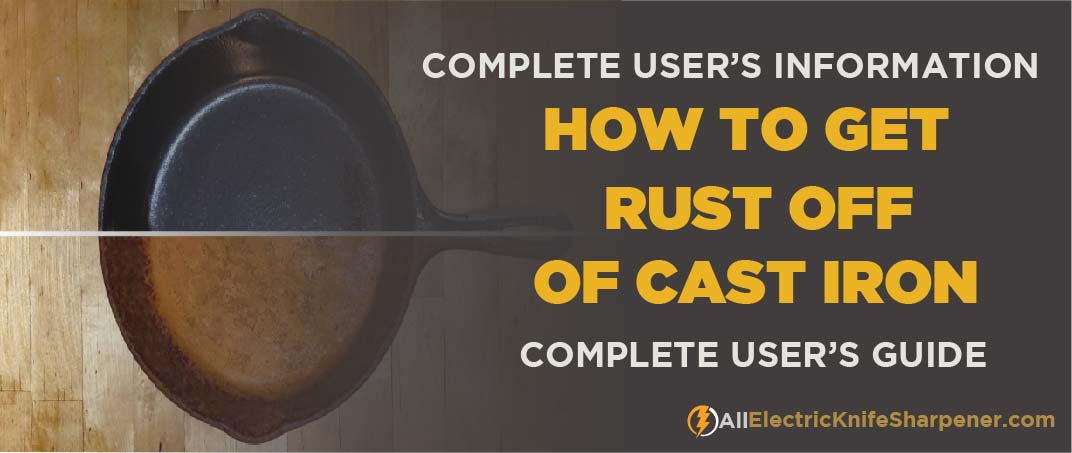
You’ll learn about different techniques for removing tarnish and what products work best safely and efficiently, tackling pesky rusted areas!
So let’s get started – it’s time to give your metals a renewing rinse and restore them to their original gleaming glory!
Table of contents
Why Does Cast Iron Tend to rust?
Cast iron tends to rust because it is a reactive metal and will react with oxygen and moisture when exposed.
The combination of these two elements forms an oxide layer known as “rust.” This layer can further erode the surface of your cast iron pans, making them less durable and efficient for cooking.

Fortunately, several methods can remove rust from your cast-iron skillets, allowing you to restore them to their former glory.
These include using steel wool or sandpaper, chemical cleaners such as vinegar and baking soda, and electrolysis.
With these methods, you’ll be able to get rid of all the rust on your cast iron skillet in no time!
How to remove rust on cast iron
Don’t fear if your cast iron cookware has accumulated some (or a lot) rust – with these straightforward steps; you can quickly refurbish it and keep cooking for many years to come!
1-Scrub and wash your pan.
Use steel wool or sandpaper to scrub away at the affected area. Be sure to rinse it off with warm water afterwards.
Apply a chemical cleaner. Vinegar and baking soda are great options for removing rust from cast iron.
Use rubber gloves and safety goggles when handling these chemicals, as they can be corrosive in large doses!
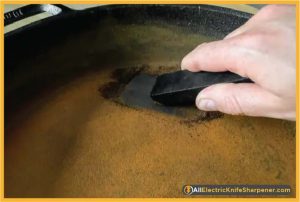
Use electrolysis to remove rust on cast iron. This process involves sending electrical currents through the rusted part of your pan,
breaking down the rust into its parts, which can then be wiped away. Although this is a more complex method, it is effective and requires little effort.
2-Dry thoroughly
Once you have removed the rust, it is essential to dry your pan thoroughly.
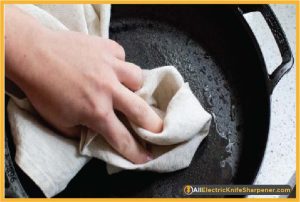
This will protect it from further oxidation and keep it looking in top condition for years to come.
3-Apply oil to protect.
Finally, apply a light coat of oil to the pan to help prevent rust from forming again in the future.
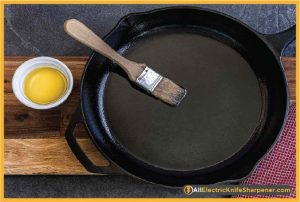
The oil will also keep your skillet well-seasoned, resulting in many delicious meals!
4-Bake For 1 Hour
Once you have prepped your pan, please place it in the oven and bake for one hour at 350°F (175°C).
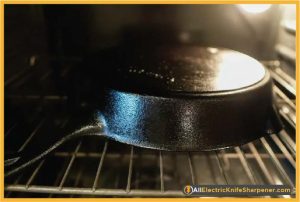
This will help ensure that the oil is absorbed into the cast iron, resulting in an even more durable finish.
5-Cool in the oven
When the hour is up, turn off your oven and let your pan cool inside for 20 minutes. This will help to fix the oil in place, resulting in a well-seasoned cast iron skillet that’ll last for years!
Following these steps, you can restore and protect your grandparent’s cast iron skillet so it can be enjoyed meal after meal.
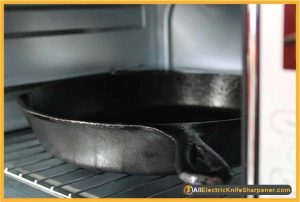
With some care and attention, you can ensure that its quality remains just as good as when it entered the kitchen decades ago.
So don’t wait any longer – get cooking with your newly refreshed cast iron skillet!
Happy cooking!
If you are intrested in reviewing How To Clean Cast Iron After Cooking Click here
